Titan 23B-08, a Titan 23B-Agena D, launches with Gambit-3 KH-8 1730 from VAFB SLC 4W on January 21, 1971. Titan 3B, the most oft-flown orbital Titan, was also the least known.
“Baseball Card” type details of both flown and never-flown proposed Titan variants are provided in the following pages.
Titan History

Titan was the second U.S. intercontinental ballistic missile, begun as a back-up to Atlas. Like Atlas, its ICBM service was short-lived, but an upgraded, storable-propellant “Titan 2” variant was more successful, standing ICBM duty for more than two decades. Titan 2, and its Titan 3, Titan 34, and Titan 4 descendants, ended up working even longer as orbital launch vehicles.
Titan 2 is best known for powering NASA’s Gemini crewed orbital missions. Titan 3E is remembered for launching the landmark Viking and Voyager spacecraft. Most Titan launches were kept out of the public eye, however, and remain obscure to this very day thanks to their highly classified payloads.
Titan trailed Atlas by about 18 months. Baltimore’s Glenn L. Martin Company, best known for its seaplanes and medium bombers, was awarded the contract for Titan in October 1955, beating proposals by Douglas and Lockheed. Martin Company leveraged its Viking and Vanguard rocket experience, creating an entirely new division for Titan at Waterton Canyon, Colorado. Bill Purdy was named Chief Engineer for the effort. A new factory and other buildings, along with four static test stands, were built in the valley and surrounding hills beginning in 1956.
The original Titan (SM-68) was a two-stage LOX/RP-1 fueled missile designed to hurl a 3,800 pound payload to a 5,500 nautical mile range. Unlike Atlas, the stages performed their burns in series, with the second stage air-lit. Two Aerojet LR87-AJ-1 (later AJ-3) engines produced almost 300,000 pounds of thrust to power the 10-foot diameter first stage.
A single 80,000 pound thrust Aerojet LR91-AJ-1 (later AJ-3) powered the 8-foot diameter second stage. The first stage carried about 159,200 lbs of propellant. The second stage was loaded with 60,000 lbs of propellant. The 90 foot tall missile weighed about 235,600 lbs at liftoff with its payload.
Titan 1 SM34 on VAFB 395-A1 elevator silo, raised position, prepares for May 4, 1962 R&D flight.
Also unlike Atlas, the Titan stages were self-supporting structures composed largely of 2014 aluminum alloy. Tank panels were chem-milled and then treated with an “iridite chromium chemical conversion coating”. The coating gave Titan its interesting gold/silver hues. The panels were assembled using a tungsten inert gas welding process that had to be invented for the alloy.
Titan used a Bell Telephone Laboratory radio-inertial guidance system, which depended on a ground-based guidance computer made by Remington Rand UNIVAC. AVCO Corporation made the re-entry vehicle.
Titan flight testing began at Cape Canaveral during 1959. It began flying from Vandenberg AFB in 1961. A landmark event took place on May 3, 1961, when Titan 1 VS-1 launched directly from an underground silo at Vandenberg AFB in a silo-launch test for the Titan 2 program. It was the first silo launch for a big missile, beating Minuteman by several months. It even beat the first Titan 1 launch from an elevator operational type silo.
The test decisively demonstrated the best way to field and launch big ICBMs, but Titan 1 (as the original Titan became known) remained married to the complex elevator silo approach. Missiles were stored on alert in the silos. When called to launch, liquid oxygen would be loaded while the missile remained underground. Then the ICBM, its launch table, and its umbilical mast would rise out of the silo, lifted by a massive elevator. Liftoff would take place soon after the launch table locked into position. The method was also used by Atlas F missiles.
During 1962, 54 Titan 1 missiles were deployed in six “3×3” lift silos at Lowry, Mountain Home, Beale, Larson, and Ellsworth Air Force Bases. Developmental Vandenberg AFB silos were also briefly put on strategic alert during the October, 1962 Cuban Missile Crises. Since cryogenic liquid oxygen late-loading limited its response time, Titan 1 was rapidly outclassed by solid-fueled Minuteman and Polaris. Titan 1 missiles were retired from service by mid-1965.
Titan 2
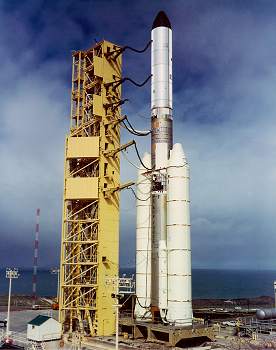
Titan 2 B52 rises from VAFB 395-C silo to begin an August 7, 1975 test flight.
During 1959 the Air Force began considering storable propellant missiles that could be launched directly from underground silos using all-inertial guidance. An improved Titan, named “Titan 2” (SM-68B) during April 1960, won approval to accomplish these goals. Titan 2 would ultimately be capable of lofting an 8,377 lb (3,800 kg) Mk 6 RV with a roughly 9 Mt thermonuclear warhead nearly 5,500 nautical miles (10,200 km), making it the largest (1,232 inches long, 120 inches diameter with RV) and heaviest (327,119 lb liftoff mass) ICBM ever developed by the United States.
Aerojet modified its Titan 1 engines to create more-powerful, but simplified engines that burned nitrogen tetroxide and Aerozine 50, a 50-50 mix of hydrazine and Unsymmetrical dimethylhydrazine. These were hypergolic, storable propellants that could be loaded into on-alert missiles for months at a time. The LR87-AJ-5 powered first stage produced 430,000 lbf thrust. Unlike Titan 1, the 100,000 lbf thrust Titan 2 LR91-AJ-5 second stage engine only had one gas generator nozzle, which swiveled to provide roll control. The second stage was enlarged to 120 inches diameter from Titan 1’s 96 inches.
Vernier thrust was provided by two small solid motors in the interstage. When commanded by the all-inertial guidance system, the vernier nozzles were cut to terminate thrust. Other small solid motors helped separate the second stage from the reentry vehicle. First and second stage separation was “fire-in-the-hole” type, with the second stage engine igniting immediately at first stage propellant depletion. Exhaust vents in the interstage provided a path for engine-startup exhaust gases.
Titan 2 assembly was performed in the same Waterton factory where Titan 1 had been built. Stages were tested, initially, in rebuilt Waterton Canyon
test stands D-l and D-2. Battleship testing began at D-1 during June 1961. Flight stage static testing began during December 1961.
The first Titan 2 launch, by missile N-2 (60-6809), took place from Cape Canaveral LC 16 on March 16, 1962. It was an “all up” test with two live stages and all-inertial guidance. The launch was a success, despite soon-to-be-infamous “pogo” appearing during T+90-120 seconds at up to +/- 2.5 g, 11 Hz. The RV impacted in the Ascension Island splash net. It was the first time that a big liquid fueled U.S. missile had succeeded during its first test.
Titan 2 began flying from VAFB underground silos in 1962. R&D flights continued into 1964, by which time Titan 2 had already been fully deployed, with 54 missiles on alert by January 1964 in silos at Little Rock, McConnell, and Davis-Monthan Air Force Bases. Titan 2 operational test flights continued until 1976. The missiles remained on duty until 1987.
After their ICBM retirements, several of the missiles were refurbished and modified to serve as Titan 23G orbital launch vehicles. Thirteen performed orbital launches from VAFB during 1988-2003.
Also read: Long Tank Thor-Delta
Gemini Titan 2 (GLV)

Gemini 4 launch with astronauts James McDivitt and Edward H. White from Cape Kennedy LC 19 on June 3, 1965. White performed the first U.S. spacewalk during this four-day mission.
Titan 2 served as NASA’s Gemini Launch Vehicle, boosting 10 two-man crews into orbit during the Agency’s adventurous, fascinating, whirlwind Gemini program. Martin Company assembled 12 GLV’s in its Baltimore plant, although the tanks were still manufactured in Denver.
NASA had contemplated a “Titan 2.5” for Gemini that would have used stretched tanks, but ended up using near-ICBM copies. Changes included a Malfunction Detection System, radio guidance replacing the heavier inertial guidance system, elimination of retro and vernier solid motors, addition of redundant flight control, electrical, and hydraulic systems, a new avionics truss inside the second stage, and a new Forward Skirt Assembly atop Stage 2. The first stage carried nearly 13,000 lbs more propellant on GLV than it did on 5,500 nmi ICBM flights, but tank size was unchanged.
NASA and the Air Force also made changes to fix a Stage 1 “Pogo” problem, a Stage 2 “hard start” issue, and a Stage 2 thrust reduction issue that appeared during the first two years of ICBM testing. The effort paid off with 12 successful GLV launches during 1964-1966. The first unmanned Gemini 1 flight went to orbit on April 8, 1964 with a spacecraft that was not designed to separate from the second stage or to reenter. It was the first Titan orbital mission. The second unmanned Gemini 2 flight was a suborbital heat shield test.
Ten subsequent manned flights pioneered in-space maneuvering, long flights, EVA (for the U.S.), rendezvous, and docking – with Agena targets launched by Atlas boosters the same day on the same range. Gemini also tested 16 astronauts (4 flew twice) who were all subsequently assigned to Apollo. Six of them walked on the Moon.
Titan 3
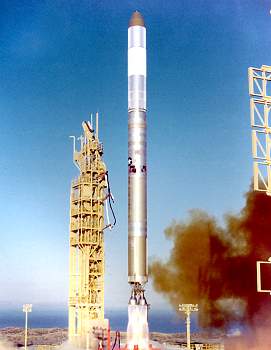
Titan 23C-31 launches DSP 8 from Cape Canaveral LC 40 on June 10, 1979.
Titan 3 originated in part from a series of USAF “Phoenix” launch vehicle studies in 1960-61. An idea to add large solid motors to modified Titan 2 missiles quickly gained favor and was approved as “Titan 3” on October 13, 1961.
Titan 3 was meant to be “standardized”, “flexible”, and “low cost”. The modified Titan 2 two-stage core (Titan 3A) could be topped by an Agena third stage (Titan 3B) and, on heavy-lift missions, would be launched by twin 120 inch diameter segmented solid motors (Titan 3C without Agena, Titan 3D with Agena).
After detailed study, Agena was dropped from the plan in March 1962 in favor of a new Transtage powered by two Aerojet AJ10-138 pressure-fed engines. Nomenclature changed as Titan 3A became a three-stage test vehicle topped by Transtage and Titan 3C became a Titan 3A with a twin solid motor first stage. Cape Kennedy Launch Complex 20 was modified to support four core-only Titan 3A tests during 1964-65 that preceded Titan 3C flights.
The Titan 3A core stages were nearly the same dimensions as the Titan 2 stages, but used thicker, heavier tank walls and skirts. Interstage fire-in-the-hole exhaust ports were expanded. The second stage fuel tank stretched to carry more propellant. It expanded a few inches into the between-tanks space that had formerly housed the avionics truss, eliminating a need to actually “stretch” the stage. Avionics moved to the top of Transtage. The Titan engines were similar to those on Titan 2, but the first stage was set up to support air-starting on Titan 3C.
Titan 23D-1 preparing to launch Hexagon 1 from VAFB SLC 4E in 1971.
Two UTC 1205 five-segment solid rocket motors added to a Titan 3A core created Titan 3C. The solid motors acted as a “zero stage”, with the core air-starting shortly before the solids burned out and separated. A “boat tail” and thermal protection covers were added to the base of the first stage and its engines to handle solid motor plume re-circulation. From 1965 through 1969, 13 R&D Titan 3C launches were performed from the vastly overbuilt ITL complex at Cape Kennedy. A 14th Titan 3C flew operationally in April 1970, still using the original LR87-AJ-9 and LR91-AJ-9 engines. Subsequent Titan 23C vehicles used improved LR87-AJ-11 first stage engines and, later, L91-AJ-11 second stage engines.
At first, Titan 3C Transtage could only lift 544 kg to geostationary orbit, but by the end of the R&D program the vehicle could lift 896 kg. The number would pass 1,000 kg with early Titan 23C Transtage vehicles, and keep rising to 1,460 kg before the improved Titan 34D variant took over in 1983. Titan 3C boosted seven IDCSP milcomsats at a time to GEO, or two Vela nuclear detection satellites to beyond GEO. Titan 23C lofted heavier DSP early warning satellites, pairs of DSCS milcomsats, Chalet/Vortex ELINTs, and NASA’s ATS-6 to GEO.
Titan 3B Agena D began flying from VAFB in 1966. It was essentially a Titan 3A with Transtage replaced by an Agena D and with radio guidance replacing Transtage inertial guidance. The rarely-seen rocket was developed to launch Gambit-3 optical reconnaissance satellites. In 1969, Titan 3B was replaced by Titan 23B, which used the upgraded AJ-11 series engines. Titan 33B, essentially a 23B fitted with a long 120 inch shroud that also covered an advanced, lightweight Ascent Agena stage, was used to boost Jumpseat ELINT satellites into elliptical Molniya orbits beginning in 1971.
From 1971 through 1982, twenty-two Titan 3D variants launched giant, classified, intricately complex Hexagon and Kennen optical reconnaissance satellites from VAFB. Titan 3D was similar to Titan 23C in appearance, but its core was essentially a Titan 23B. Since it flew only to low earth, near-polar orbit it did not use Transtage. The Titan 23B radio guidance system was employed to replace Transtage inertial guidance.
Titan 23E-4 launches Viking 1 from Cape Canaveral LC 41 on August 20, 1975
Titan 3E, NASA’s “mighty Titan/Centaur”, was the ultimate Titan 3. It was developed after budget cuts forced the end of NASA’s Saturn programs. Titan 3E was a Titan 3D with a Centaur D-1T fourth stage and, on some missions, a TE-M-364-4 (Star 37E) fifth stage. Both the payload and Centaur were enclosed in a 58.48 foot long, 14 foot diameter, two-piece, Lockheed-built “Centaur Standard Shroud” (CSS). A “Titan/Centaur Interstage Adapter” tied Titan, Centaur, and CSS together.
Centaur guidance replaced Titan 3D’s radio guidance. Centaur was modified to provide long coasts and four or more restarts. Cape Canaveral’s Launch Complex 41 was modified to support Titan 3E.
Seven Titan 3E launches took place during 1973-1977. They boosted two Helios satellites on sun-grazing 0.29 AU x 1.0 AU missions, two Viking Mars orbiter/landers, and Voyagers 1 and 2 on historic missions to the outer planets. The Viking and Voyager pairs were launched within 2-3 weeks from the same pad, which is an interesting story all by itself. Titan 3E’s missions were landmark beyond measure. Two of those missions, the Voyagers, continue still, nearly four decades later.
The 34-Series Titans

Titan 3M, designed to launch the U.S. Air Force Manned Orbiting Laboratory (MOL)/Dorian KH-10 reconnaissance system, was nearly ready to fly when the program was cancelled on June 10, 1969. The costly effort was not totally lost because Titan 3M’s “-11” series core stage engines, stretched first stage, and 7-segment solid rocket motors all flew on subsequent Titan variants. In addition, many of MOLs USAF astronauts went on to fly Shuttle missions.
Titan 34B-08 carried Jumpseat 6, a signals intelligence satellite, from VAFB SLC 4W on April 24, 1981. The launch may have placed its payload in a lower than planned orbit, but confirmation awaits declassification. This is the only known publicly-available image of a 34B with a long fairing.
The AJ-11 series core stage engines began powering Titan 23 series vehicles in 1969. On August 12, 1971, the stretched Titan 3M first stage itself flew, powering the first Titan 24B/Agena D from VAFB SLC 4W with the 32nd Gambit-3 reconnaissance satellite. Twenty two more similar Titan 24B launches took place from the same pad through 1984. The stage, stretched about 71 inches, could carry 15-20 more tonnes of propellant to exploit the higher thrust engines. Accounts of liftoff thrust vary from 437 Klbf to 463 Klbf. Thrust and propellant loading may have grown over time, as Gambit-3 progressed to heavier versions. The second stage remained largely unchanged from Titan 23. On its third flight, the Titan 24B Agena stage began using High Density Acid (HDA) to improve specific impulse.
Gambit-3’s ground resolution, rumored to be the best ever achieved by the United States, remains classified.
Titan 34B used the stretched Titan 3M first stage like Titan 24B and the 10 foot diameter shroud like Titan 33B. Titan 34B also used Ascent Agena inertial guidance, after flying in open-loop mode during the first 135 seconds, rather than the previous radio guidance. From 1975 through 1987 it flew 11 times, launching Jumpseat and Quasar (SDS) satellites toward Molniya orbits. There is uncertainty about which satellites were which, since they went generally to the same orbit type. SDS used shorter shrouds than Jumpseat, but launch photos are rare.
The final Titan 34B, 3B-66 launched on February 12, 1987, was the last flight of a Lockheed Agena stage. With something like 362 launch attempts, Agena remains the USA’s most often-flown upper stage. It was also the 68th and final Titan 3B, the end of what seems to have been a very successful launch vehicle. A total of 69 Titan 3B cores were apparently built, which makes one wonder where that last one ended up.
First Titan 34D during developmental pre-launch testing at Cape Canaveral LC 40. VIF and SMAB, part of the ITL complex, are visible in the background.
The Titan 24/34B vehicles used the same umbilical tower as the shorter 23/33B rockets thanks to a shorter launch mount that lowered the engines that 70-ish inch distance, allowing the upper stages to maintain their stations.
Titan 34D added one-half segment to the previously 5-segment solid motors and adopted the same stretched Titan 3M first stage used by Titans 24B and 34B. AJ10-138A ITIP (Improved Transtage Injector Program) engines powered the Transtage. Titan 34D could also use the new two-stage solid motor Interim/Inertial Upper Stage (IUS) that was being developed for Shuttle. Both upper stages provided inertial guidance for Cape Canaveral launches to GEO or near-GEO, replacing Titan 23C. A radio-guided No Upper Stage Titan 34D version replaced Titan 3D out of Vandenberg.
A total of 15 Titan 34D launches took place, with mixed results. The inaugural launch in 1982 successfully debuted IUS, which boosted a DSCS pair to GEO. Six successful flights – three with Transtage and three from VAFB, subsequently took place.
Then the bottom fell out. There were three failures in five launches during 1985-88 that destroyed or lost costly Hexagon, Kennen, and Mercury satellites. The 1986 Hexagon launch failure happened only seconds after liftoff when one of the solid motors failed, causing substantial damage to the VAFB SLC 4E launch pad.
After much investigation and procedure-changing, the final three 34D launches succeeded. The last, 34D-2 with the 47th and final Transtage, orbited a DSCS pair from the Cape on September 4, 1989.
Commercial Titan 3

CT-3 Successfully orbited Intelsat 604 and Orbus 21S from Cape Canaveral LC 40 on June 23, 1990.
Martin Marietta’s post-Challenger era “Commercial Titan 3” used the 5.5-segment Titan 34D solid boosters and first stage and a stretched (17 inch stretch compared to Titan 34D) Titan 4 second stage with an attitude control system added to its forward skirt. Higher thrust Titan 4 “-11A” series engines powered the Titan stages. An inertial guidance system was installed in the Stage 2 forward skirt. An Ariane 4 type, 4-meter diameter Contraves payload fairing set up to carry single or dual payloads topped the rocket. The design was offered for the USAF “MLV” and “MLV’2” competitions in 1986-87, losing both.
Martin Marietta honored its already-won commercial contracts, but sought no more work for its orphaned booster after the MLV losses. The Commercial Titan 3 inaugural flight, from Cape Canaveral LC 40 on December 31, 1989, was highly successful, boosting JCSat 2/Orbus-7S and Skynet 4A/PAM-D2 into low earth orbit. The spin-stabilized perigee kick motors took over from there, successfully powering both satellites to GTO.
The second flight on March 14, 1990 was an embarrassing failure. The Titan second stage reached LEO, but the Intelsat 603/Orbus 21S combination could not separate from the stage due to incorrect deployment system wiring. The 4,215 kg Hughes HS-393 satellite subsequently separated from the Orbus 21S motor and boosted itself into a safe low earth orbit. In May, 1992, the STS-49 crew captured the satellite and attached it to a new PKM, which boosted it to GTO. Intelsat 603 finally made it to GEO, where it served for 23 years before being decommissioned.
The third Commercial Titan 3 successfully launched Intelsat 604/Orbus 21S on June 23, 1990. Two years later, the final Commercial Titan 3 launched Mars Observer, which was successfully boosted toward Mars by its Transfer Orbit Stage.
Titan 4

Titan 4A K-7 Launched the first Trumpet SIGINT from Cape Canveral LC 41 to a Molniya orbit on May 3, 1994. Trumpet weighed an estimated 6 tonnes, requiring the Titan 401 variant with a Centaur upper stage. The mission also required a long payload shroud.
The Titan 4 program began in 1985, when the U.S. Air Force won funding to develop a “Complementary Expendable Launch Vehicle” (CELV) as a back up to the space shuttle. General Dynamics proposed a 200 inch diameter Atlas “2”/Centaur G-Prime. NASA proposed SRB-X. Alliant Techsystems proposed a mostly solid motor family with a new high energy upper stage. In the end, Martin Marietta’s Titan 34D-7 (later Titan 4) design won the contract.
The initial CELV contract, awarded during 1985, called for 10 launches from Cape Canaveral SLC 40. After the Challenger disaster the program was expanded to 41 launch vehicles to be flown from two pads at the Cape and from SLC 4E at Vandenberg AFB.
Titan 4A, the initial variant, used, essentially, the seven-segment SRMs originally developed for Titan 3M. The first stage was stretched 95 inches and the second stage 17 inches, compared to Titan 34D. Upgraded LR87/91-AJ-11A engines powered the core stages. All versions used inertial guidance.
Multiple Titan 4 versions were developed. Transtage was replaced by IUS and Centaur T (G-Prime) on Cape launches. Three “No Upper Stage” (NUS) versions flew from Vandenberg and from Canaveral. Enormous 200 inch diameter payload fairings extended up to 86 feet, making the tallest Titan 4 stand nearly 62 meters (203.35 feet). With Centaur T, Titan 4A could put nearly 4.55 tonnes into GEO. Titan 4A NUS could loft 17.6 tonnes to LEO from the Cape or 14 tonnes to low near-polar orbit from California.
Titan 4A flew 22 times, with 20 successes, during 1989-1998, orbiting numerous high-priority national defense satellites, numbers of which had been designed to fly on Shuttle.
Titan 4B-34, a No-Upper-Stage variant, launched KH-11 (Kennen) 13 from VAFB SLC 4E on October 5, 2001. The 3-segment SRMUs provided a sleeker appearance compared to Titan 4A.
Titan 4B used substantially improved solid rocket motors. Hercules Aerospace won the SRMU (Solid Rocket Motor Upgrade) contract in 1987, beginning an odyssey that would see tragedy, explosions, delays, lawsuits, and the creation of the most advanced U.S. solid rocket motor yet to fly.
SRMU replaced the SRM steel cases with longer graphite composite cases. It used three segments rather than seven, with improved joints. Its internal propellant diameter increased from 120 to 126 inches. A hydraulic TVC system replace the older, less efficient fluid injection system. HTPB propellant replaced PBAN. Propellant loading increased. Dry mass fell. Specific impulse and thrust and burn time increased. With SRMU, Titan 4B could lift nearly 24% more payload to low earth orbit than Titan 4A.
Development was troubled and costly. The preliminary SRMU qualification motor test on April 1, 1991 resulted in a violent explosion that destroyed the motor and heavily damaged the test stand. A successful test finally occurred on June 12, 1992.
While development struggled, the Cold War ended, reducing launch numbers which further drove up per-launch costs. The first Titan 4B launch was delayed until February 23, 1997. In the end, only 17 Titan 4B launches occurred before the program ended in 2005. Two suffered upper stage failures (one IUS and one Centaur), but the SRMU and Titan stages worked every time. Payloads included Milstar 2, Orion, DSP, Lacrosse, Kennen, and the still-mysterious “Misty 2”. The best-known Titan 4 payload was Cassini, launched toward Saturn in 1998.
Titan 4B closed out 46 years of Titan flight history with a Kennen (KH-11) launch from Vandenberg AFB on October 19, 2005. It was the 368th Titan launch, the 39th Titan 4, and the 123rd solid motor-boosted Titan.
In 1995, Martin Marietta merged with Lockheed to form Lockheed Martin. The core Titan stages were built at Waterton right to the end, nearly 50 years after the beginning of the program, making the site the longest-running U.S. rocket factory.



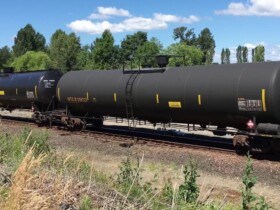
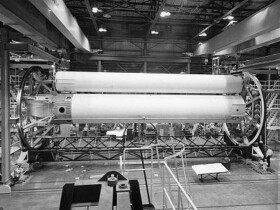


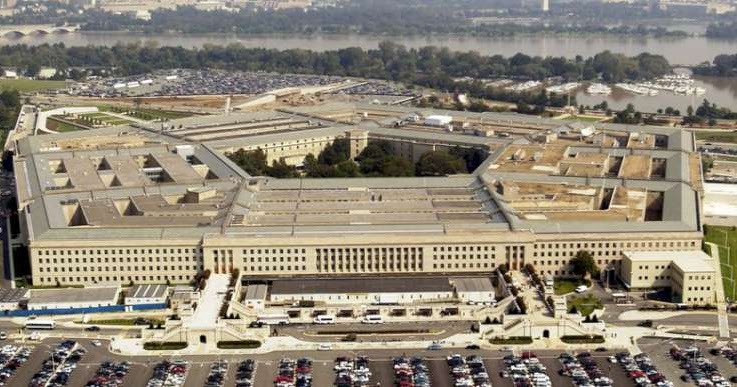
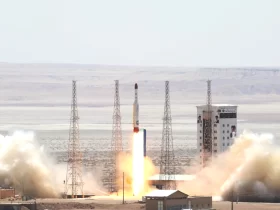






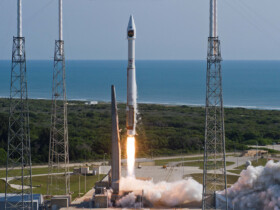
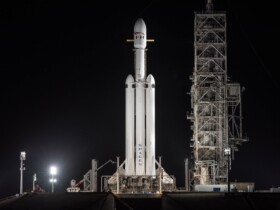
Got a Questions?
Find us on Socials or Contact us and we’ll get back to you as soon as possible.